Olson interprets the remains of vintage magazines and other paper paraphernalia to illustrate a recreated mythology. Exaggerated idols can be found in the most unassuming of inanimate objects, as in the towering pink liquids of Delicious Land; humans are translated into curious anomalies within environments never to be encountered. Even the simplest geometric shapes are given new context. The glory that saturates symbolism in his ordered universe recalls, with little effort, the naivety of space exploration and human pursuit of knowledge. Every image by Olson is characterized by the familiar presence of the Earth or objects of earthly origin, yet deliberate fragmentation makes them feel extraterrestrial. In further emphasis to this refrain, overt images of astronomy intensify Olson’s dialogues with people, places and structures. Yet, by maintaining a rooted sense of natural flow within his collage, Bryan Olson engages with the absurdity of human behavior and the scope of the massive cosmic entities without, on the most part, seeming psychedelic.
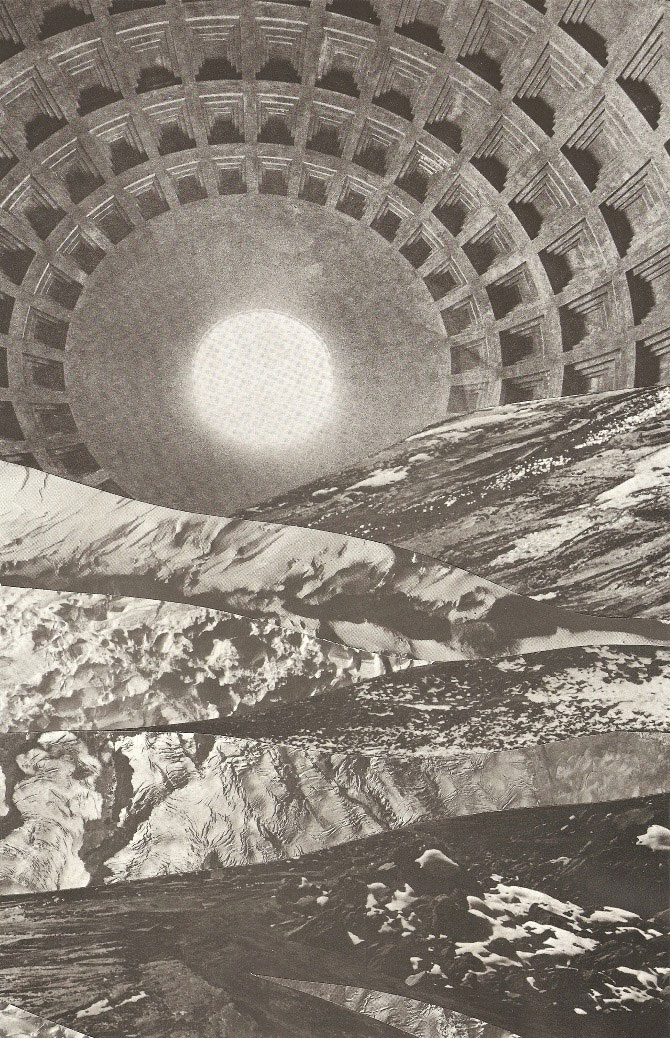
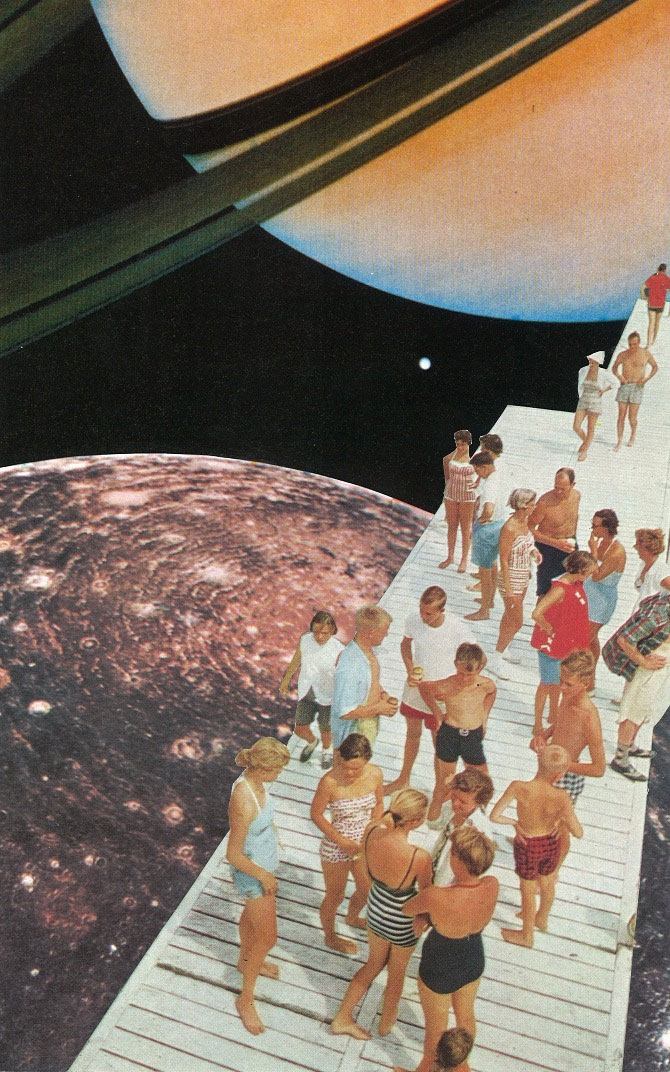
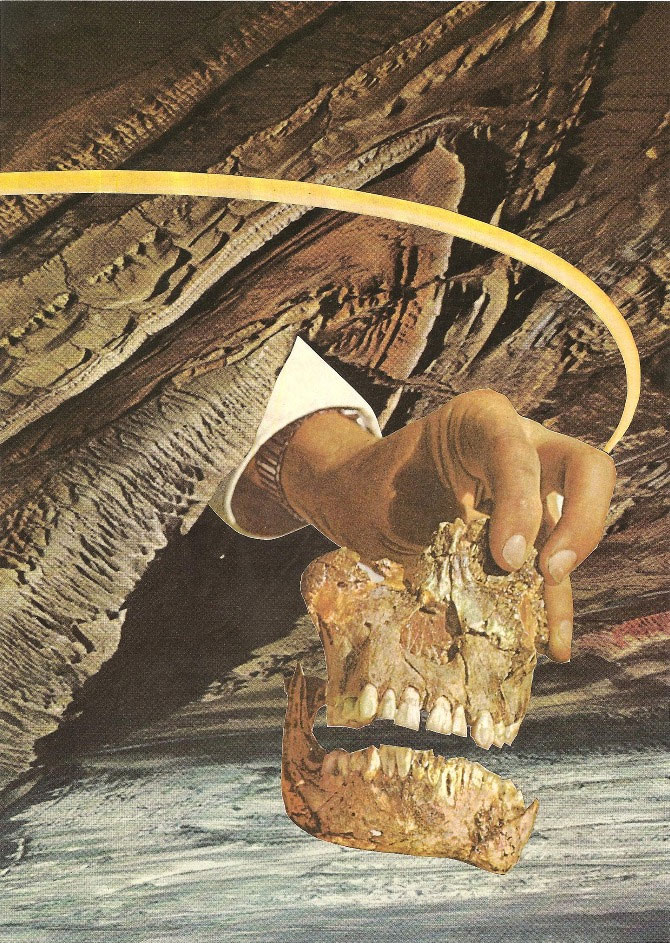
Highlight Questions
Given that your arrangements use the medium of collage as a way to express surreal and science-fiction influences, in what ways do you explore dreams or the subconscious in your work?
In most cases, our dreams are bizarre scenes or half-thoughts. They are incomplete storylines that zip off into different directions. My creative process starts like a dream; I never really know what I’m going for or what pieces will be used to complete the collage. It’s a very subconscious adventure at first, but then I wake up and reality sets in. The reality is making sure I glue everything down correctly.
A few of your collages feature crowds of people, and a few individuals, set against the backdrop of the cosmos. What kind of meaning do you find, or did you intend, in placing humans against space?
We as a human race are always searching for an answer to the unknown. We have broken down impossible barriers in the fields of science, technology and biology, yet we are still not satisfied. The universe contradicts us in so many ways. We know so little about it and may never truly understand it. It’s a fascinating thing to go outside on a starry night, look up, and ask yourself: “what is out there? How did I get here?”
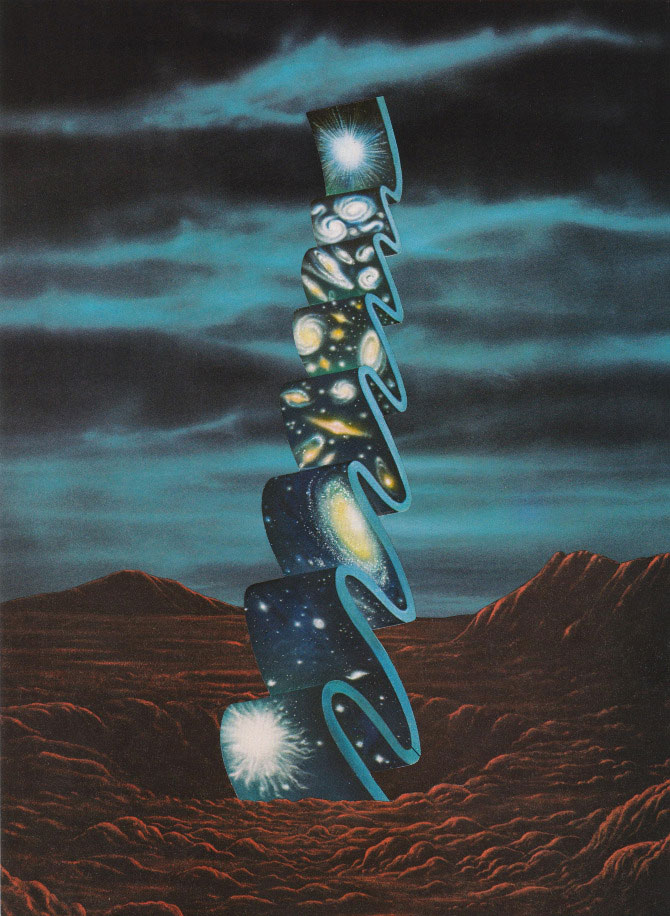
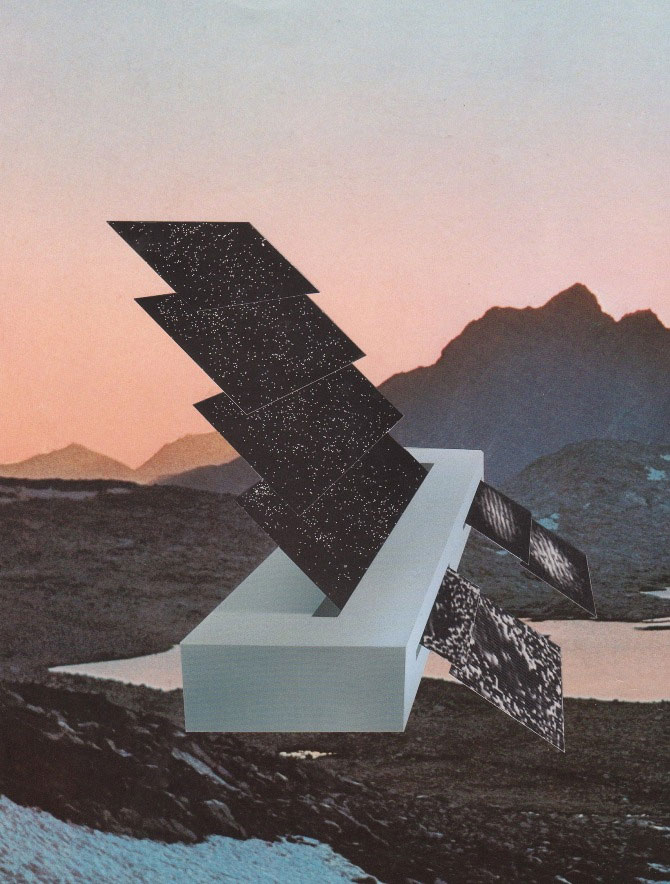
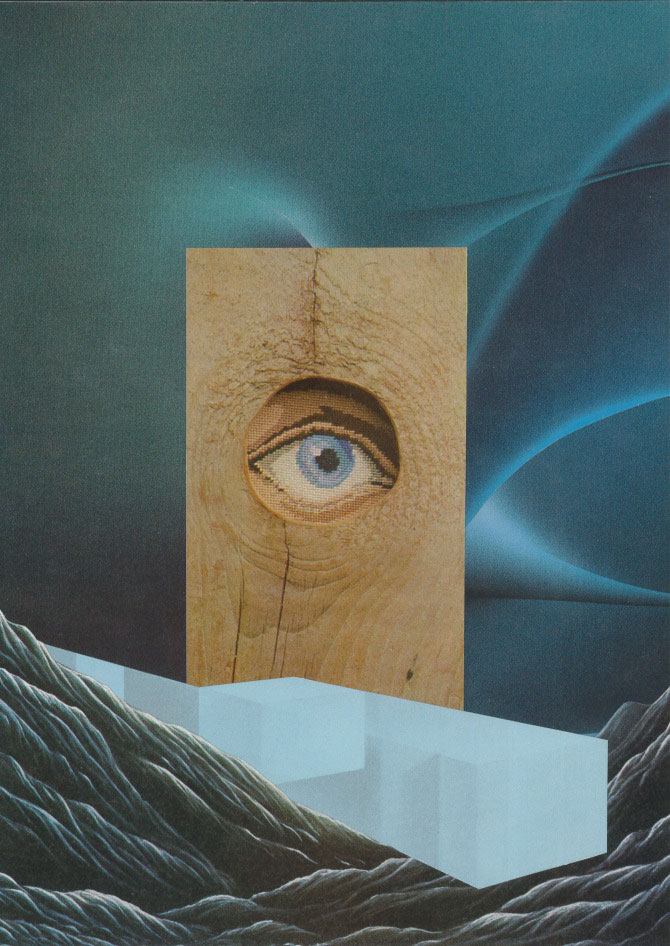
Highlight Questions
Some of your images explore strong geometric shapes: they command a presence in a landscape like statues or they seem to represent suspended structures. What role does “structure” and “place” hold in your images?
I try to incorporate architecture into my work as much as possible, whether it’s an actual building or monolithic design. I am inspired by Mies Van Der Rohe‘s approach, using raw materials such as glass, steel and concrete to exhibit a strong structural presence through simplicity. I am also inspired by the abandoned Spomenik monuments of Yugoslavia. They have a strange polarizing presence, and I try to portray that feeling in my work.
Given that the arrangements of geometric shapes in your images appear very purposeful, what kind of symbolism lies behind the shapes you chose? Is there significance to their placement in your compositions?
Most of my collages display landscapes, natural subjects and man made subjects together in the same setting. I try to imagine how nature sees man. If nature had human emotion, how would it perceive us? What would we look like? What does the pain of our ignorance and over consumption feel like? The piece ultrastructures #8 is an example of that idea.
Geology and geographic themes are very dominant in your series: what role do places have in your composition, and is there an overarching relationship with the Earth or environment that you hope to convey?
Pulling from the previous answer to the question of symbolism, the overarching relationship is that of man and nature. I, however, am not specific in my choices of geographical places for most of the images I choose are from a vast culmination of source material and are selected by visual appeal.
Adapting Fields (below) features the golden spiral. How did you discover this symbol and what significance do you attribute to it, in both the image and on a personal level?
I think I stumbled upon the “golden spiral” when browsing through in old physics book for images to use for a collage. I was very inspired by the fact that the spiral shows up in nature all of the time. From a nautilus shell to distant galaxies, this spiral appears. It is almost like the spiral defines our existence. We are born, we live our lives and then we die. We continue to spiral, forever. Something magical is definitely happening there.
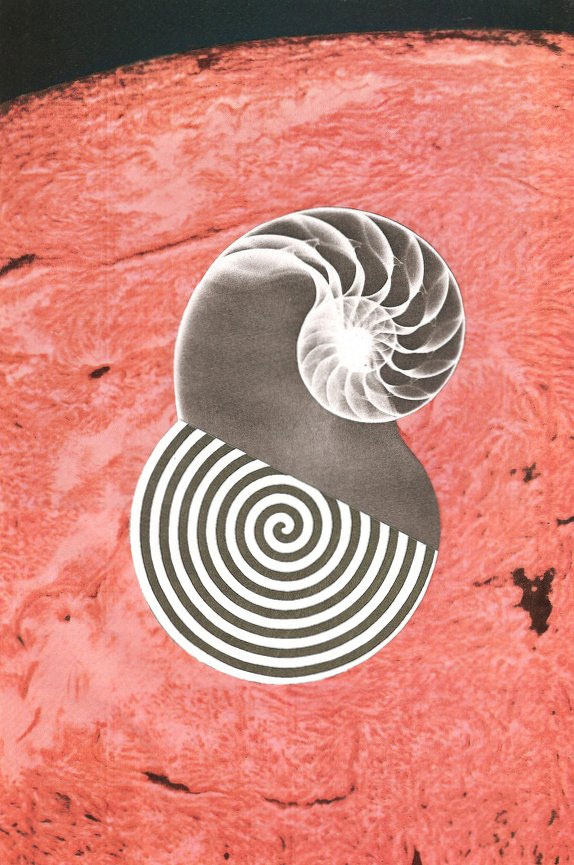
Bryan Olson’s Top Three
Talk Sheep
“This piece was dedicated to a fellow collage artist (Jesse Treece) after a brief discussion about using sheep in our collages. The image portrays passersby stopping to gaze at a herd of sheep below. In the background, a mechanical wall of buttons and dials with an eye in the middle gazes upon the passersby. It’s a portrayal of how politicians have overall say and control over the government and the people. From the eye of the machine, we are just sheep.”
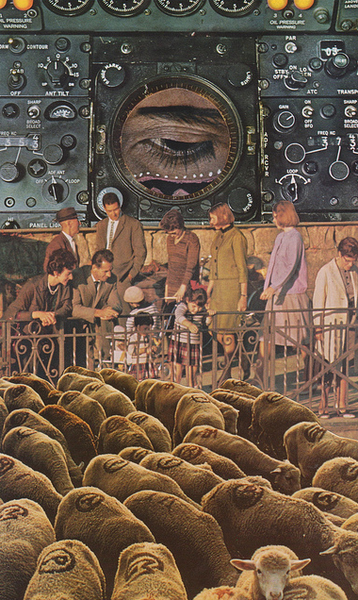
Fragility
“I was inspired to make this piece after reading an astronaut’s take of seeing earth from space and how fragile it looked. He described it as being ‘a fragile oasis on the backdrop of infinity’.”
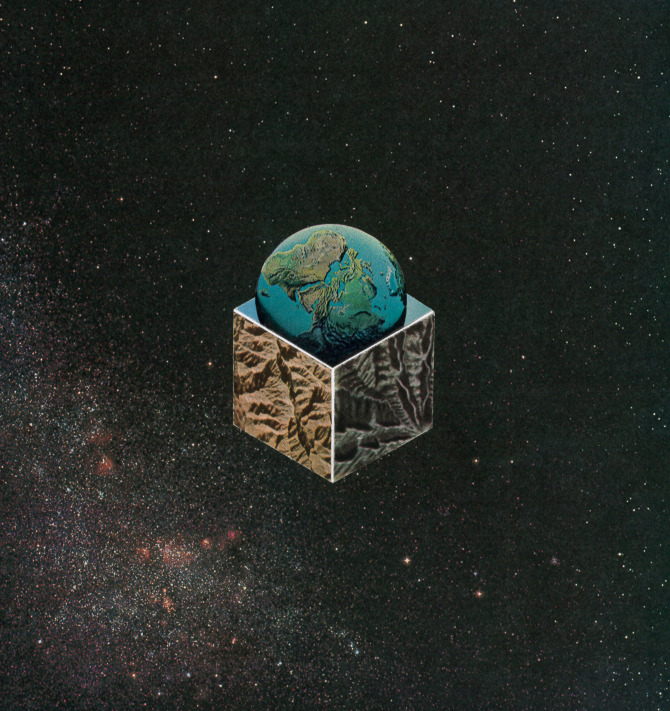
“5th Density”
“My brother and I have had lengthy discussions about the afterlife and densities. We can get into some interesting topics regarding extraterrestrials as well. This piece was inspired by those conversations.”

Ω

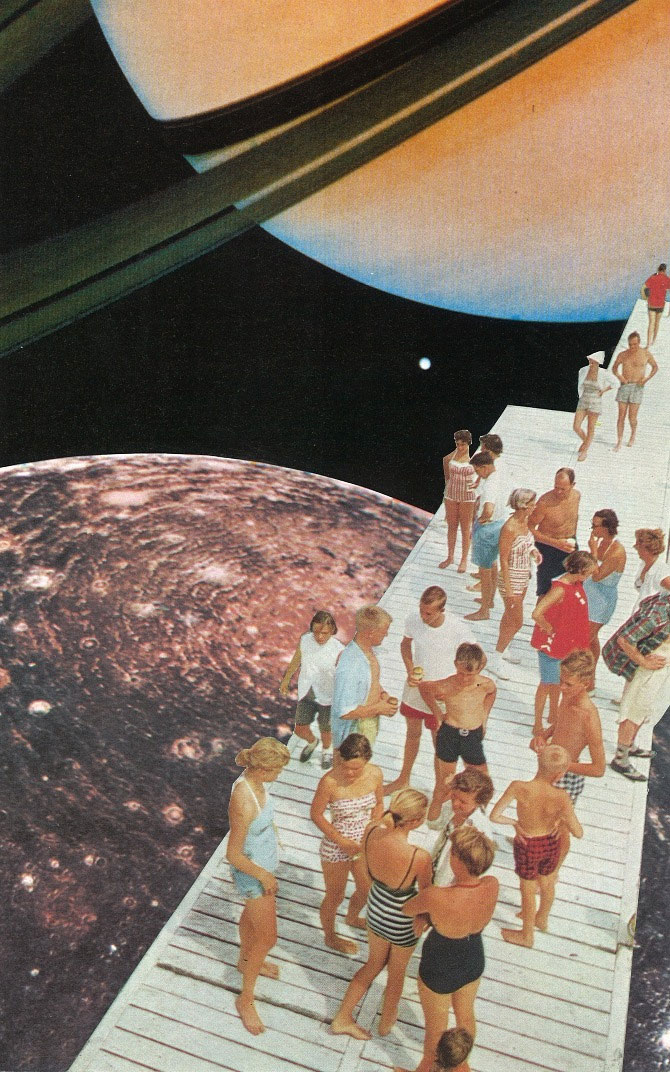







[…] Bryan Olson Collage Artist Interview: Ultrastructures & Human Placement in Space: http://www.redefinemag.com/2013/bryan-olson-collage-artist-interview-collage-art-ultrastructures-spa… […]
Great collages and a true inspiration. Thanks for the interview
[…] Inspired by the architecture of Miles Van Der Rohe and the Spomenik Monuments – built after World War II – in former Yugoslavia Olson brings classical scientific discovery together with modernist art, design and a musicality into his process to create an alternative universe in which people are insignificant and nature is omnipotent. And while psychedelia seeps into his aesthetic it’s not a trip we’re familiar with. His journey goes further, plumbs deeper, wants to question the predominance of man over nature. As he said himself in an interview with Redefine magazine: […]